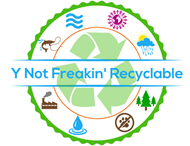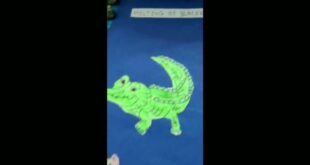Animals in the deep ocean enjoy feasting as much as we do, but in the vastness of the deep sea food can be scarce. Animals must take advantage of any potential meal that comes their way. Sea cucumbers are often seen devouring what looks like blobs of goo on the seafloor. Many deep-sea animals rely on organic material falling from the surface. Large accumulations of mucus, or sinkers, are a significant source of food in the deep.
Sinkers are cast-off feeding nets made by midwater organisms, like larvaceans. When the nets are discarded and start to sink, they begin to collect small animals, food particles, and fecal matter. They become increasingly compact as they descend. This mobile food source makes an easy target for hungry animals. The sinkers that reach the seafloor provide a fresh–and vital–feast for animals living on and in the sediment. By scavenging on the deposited mucus, deep-sea animals capture carbon. This process, known as the biological pump, transfers carbon dioxide from the surface to the deep sea. As the organic material is eaten, carbon that was once in the atmosphere becomes locked away in the deep sea.
The role of animals in buffering impacts of climate change is something for which we can all be thankful for. However this climate service comes at a cost and we are still learning how increasing carbon dioxide in our atmosphere is altering these deep-sea communities over time. This is one reason why we must act to reduce carbon emissions quickly. Our health depends on a healthy ocean.
Producer/editor/writer: Larissa Lemon
Production team: Larissa Lemon, Heidi Cullen, Kyra Schlining, Nancy Jacobsen Stout, Susan von Thun
Music: Deep Oceans by Dany Vln (Motion Array)
MBARI references:
Lemon, Larissa M., Kenneth L. Smith Jr, and Christine L. Huffard. “Abyssal epibenthic holothurians respond differently to food quantity and concentration fluctuations over a decade of daily observation (2007–2017).” Deep Sea Research Part I: Oceanographic Research Papers 188 (2022): 103853.
Robison, Bruce H., Kim R. Reisenbichler, and Rob E. Sherlock. “Giant larvacean houses: Rapid carbon transport to the deep sea floor.” Science 308, no. 5728 (2005): 1609-1611.
Smith Jr, Kenneth L., Alana D. Sherman, Paul R. McGill, Rich G. Henthorn, John Ferreira, and Christine L. Huffard. “Evolution of monitoring an abyssal time-series station in the northeast Pacific over 28 years.” Oceanography 30, no. 4 (2017): 72-81.
Video Production:
Editor: Larissa Lemon
Writer: Larissa Lemon
Production team: Larissa Lemon, Heidi Cullen, Kyra Schlining, Nancy Jacobsen Stout, Susan von Thun
Music: Deep Oceans by Dany Vln (Motion Array)
Follow MBARI on social media:
Facebook: https://www.facebook.com/MBARInews/
Twitter: https://twitter.com/MBARI_News
Instagram: https://www.instagram.com/mbari_news/
Tumblr: https://mbari-blog.tumblr.com
LinkedIn: https://www.linkedin.com/in/mbari-monterey-bay-aquarium-research-institute-580a24169/
And now, TikTok: https://www.tiktok.com/@mbari_news
source
 Pollution Climate Change Holocene Deforestation Population Acidification Y Not Freakin' Recyclable
Pollution Climate Change Holocene Deforestation Population Acidification Y Not Freakin' Recyclable



